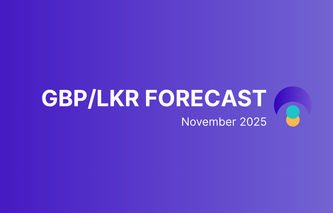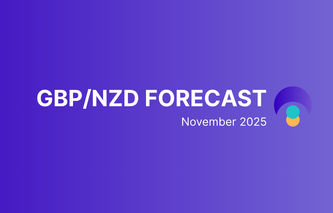If you’re planning to send money from the UK to Europe or vice versa next month, here’s a simple breakdown of what’s happening with the British Pound (GBP) and the Euro (EUR), and what you can expect in November 2025.
GBP to EUR: Where It Stands
The Pound has been bouncing around against the Euro in recent weeks.
As of early November 2025, the British pound (GBP) is trading in the 1.1450 to 1.1560 range against the euro (EUR).
The exchange rate has recovered slightly from earlier lows, but markets remain volatile due to uncertainties in both the UK and the eurozone. Right now, the rate sits just above 1.15, suggesting one Pound will buy just over 1.15 Euros.
What’s Driving GBP to EUR?
Economic situations in both the UK and Europe are behind the movement.
In the UK, mixed economic signs are influencing the Pound. Some positive data, like small increases in GDP and industrial output, have supported the currency.
But other things, like falling wages and rising unemployment, are worrying investors.
There's also nervousness about the UK government's upcoming budget in late November, which could include tax hikes.
That may slow down the economy and push the Pound lower.
On the Euro side, political instability in France and weak economic data from Germany are causing problems.
France’s government narrowly avoided collapse and faces ongoing budget issues.
Germany, the region’s largest economy, is also seeing slowing activity.
Central banks also matter. The Bank of England is split about whether to cut interest rates soon, maybe in December.
The European Central Bank is more cautious, meaning it may hold rates steady longer.
If the UK cuts rates first, the Pound may weaken against the Euro.
What Do the Charts Say?
Technical trends help predict where the exchange rate could go next.
Right now, the GBP/EUR exchange rate is trading near a key level: 1.15. This is seen as a support level, a kind of “floor.”
If it holds above this level, the rate could rise toward 1.1560 or even 1.17.
But if it breaks below 1.15, it may fall toward 1.1414, or in a more serious case, down to 1.11.
Because the Pound has been under pressure lately, traders see the short-term trend as slightly negative unless the UK delivers stronger economic data or the Euro is hit by more political or economic trouble.
Live GBP/EUR Chart
What to Watch in November 2025
A few events could shake things up for the exchange rate.
UK Autumn Budget (expected Nov. 26): Tax hikes or bigger spending cuts could hurt the Pound.
UK employment data: If job losses rise further, it could bring forward an interest rate cut.
Bank of England speeches: Comments about future rate moves will be important.
Eurozone data (especially from Germany and France): Weak numbers could pressure the Euro.
If any of these surprise markets, we could see quick moves in the rate.
Risks Ahead
Both currencies face different risks that could affect the exchange rate.
For the Pound, the biggest risks are a poor UK budget, a sharp rise in unemployment, or the Bank of England cutting interest rates earlier than expected.
For the Euro, continued political problems in France, poor economic data, and investors losing faith in the European recovery may push the Euro down.
What This Means If You’re Sending GBP to EUR Abroad
Here’s what to think about if you're planning to transfer Pounds to Euros.
At the current rate of around 1.15, you're getting fairly good value compared to September lows.
But there’s a risk the rate could drop again if the UK economy weakens or if the government budget disappoints investors. That would mean fewer Euros for every Pound.
If the rate rises (e.g. towards 1.17), waiting could give you more Euros per Pound, but this depends on riskier Eurozone news.
If you need certainty, it may be worth locking in the current rate, especially if sending money before the end of November.
In short
Pound to Euro could move either way, but there's more risk of GBP weakness in the next month.
The exchange rate is slightly in favor of the Pound now, but that could change fast due to UK budget concerns and possible interest rate cuts.
If you’re sending Pounds to Europe soon, now may be a good time to consider doing it, or at least lock in today's rate, especially before the UK Budget announcement at the end of November.
Watch 1.15 as the key level: falling below that could reduce how much Euro you get.






